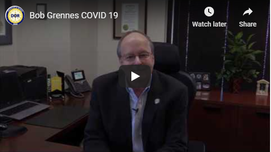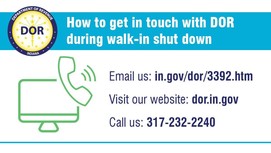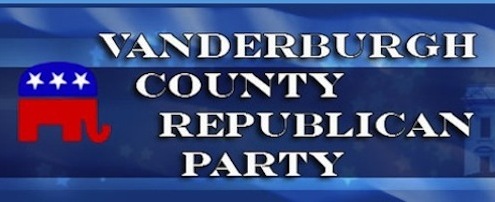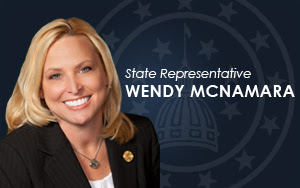https://www.vanderburghsheriff.com/jail-recent-booking-records.aspx
Financial Doomsday: State, Local Governments Face Layoffs, Service Cuts, Projects Derailed
Financial Doomsday: State, Local Governments Face Layoffs, Service Cuts, Projects Derailed
A Congressional Research Service report last week on initial coronavirus aid said that “early evidence suggests that the COVID-19 economic shock will have a notable impact on state and local budgets,” pointing to the “sizable share of economic output” that derives from state and local governments.
Linda Bilmes, a professor at the Harvard Kennedy School and a leading expert on public budgetary and financing issues, told NBC News that the nature of the crisis prevents states from raising new revenue in traditional ways.
“Can you increase property taxes, retail taxes, income taxes, special investments? Can you increase service fees? Well, no,” she added. “Nobody’s using services, toll roads. Can you expand the number of fees? Can you increase traffic violations? Well, nobody’s driving.”
These governments will need to instead lay off or furlough workers, reduce benefits, cancel projects, defer construction and maintenance, and more.
“But the problem is that by doing all of those kinds of things and canceling a lot of that kind of capital projects, those are the things that create employment and activity in the community and in the economy,” Bilmes said, adding, “It’s certainly capable of derailing a recovery or creating a second wave of recession.”
Already, governors, mayors, and county executives are planning for substantial budget cuts. Washington Gov. Jay Inslee, a Democrat, slashed roughly $235 million in planned spending. In Michigan, Pennsylvania, and Wisconsin, estimates suggest that billions in projected revenue over the next year will vanish. At the county-level, the National Association of Counties estimates close to $150 billion in lost revenue.
Matthew Chase, executive director of the National Association of Counties, said counties are watching as revenue from sales and gas taxes, court filing fees, and mortgage transactions evaporate. The losses mean “you’re going to see a cut in the staff at the exact wrong time, when their residents actually are going to need more services.”
State and local governments employ more than 10 percent of the overall U.S. workforce, including police officers, firefighters, and public-school teachers. State governments heavily subsidize public universities and finance significant construction projects, while local governments handle everything from trash collection to filling potholes.
Nan Whaley, the mayor of Dayton, Ohio, said her administration felt the impact of the outbreak on its budget “right away,” and quickly furloughed nearly a quarter of the city’s employees and has since instituted a hiring freeze. She’s asked her departments to provide guidance on what an 18 percent spending cut would look like, which she said would affect police, fire, and trash pickup, among other services.
“In 2009, in the Great Recession, most midsized cities in the middle of the country were decimated. We cut like 40 percent of our employees then,” said Whaley, a Democrat. “So we are on bare-bones as it is.”
This crisis, Whaley believes, “will be even worse than the Great Recession — by a factor of at least two.”
In Oklahoma City, Mayor David Holt, a Republican, said his city faces budget cuts of 3.3 percent for police and firefighters and 11.25 percent for all other departments for the upcoming fiscal year. But Holt says his city is buoyed by a more than $100 million reserve fund.
“We’re always prepared for bad stuff to happen,” he said. “Nevertheless … these are probably some of the biggest cuts here in Oklahoma City that we’ve taken in the last two decades.” Â The federal intervention will be needed within a couple of months, Holt said.
The National Governors Association has called for $500 billion in funding to state governments to account for budget shortfalls, while counties and mayors have called for an additional $250 billion in emergency relief. On Monday, Sens. Bill Cassidy, R-La., and Bob Menendez, D-N.J., unveiled a legislative proposal for $500 billion in state and local funding.
“In this crazy and political environment where you can’t get Democrats and Republicans to agree on anything,” New York Gov. Andrew Cuomo, a Democrat, said, “all the governors agree and have said to Washington, ‘Make sure you fund the states in any next bill you pass.'”
In three Rust Belt states, Govs. Gretchen Whitmer of Michigan, Tom Wolf of Pennsylvania and Tony Evers of Wisconsin, all Democrats, wrote to President Donald Trump last week asking him to work with Congress to get states and localities more funding.
“Without this leadership, the damage to our state economies will be exacerbated by the cuts we know we will be forced to make,” they said.
The boost won’t be coming in this current round of coronavirus aid, though Senate Minority Leader Chuck Schumer, D-N.Y., sounded optimistic it would be included in a future aid package.
In a letter to senators, Schumer said he was “disappointed” the funding was not part of the upcoming bill but added that “as a part of this agreement, we were able to secure a commitment from (Treasury) Secretary Mnuchin that he will support additional state and local relief in the next COVID-19 legislation, as well as a provision providing the flexibility to use all past and future relief dollars to offset lost revenues.”
However, Senate Majority Leader Mitch McConnell, R-Ky., seemed to throw cold water on the possibility of additional massive relief bills, telling reporters Tuesday he thinks “it’s also time to begin to think about the amount of debt we’re adding to our country and the future impact of that.”
“Until we can begin to open up the economy, we can’t spend enough money to solve the problem,” he said, adding, “Let’s weigh this very carefully because the future of our country in terms of the amount of debt that we’re adding up is a matter of genuine concern.”
Then on Wednesday, McConnell told conservative radio host Hugh Hewitt: “Fortunately, what they wanted to extract the most, I refused to go along with, and the White House backed me up, and that was we’re not ready to just send a blank check down to states and local governments to spend anyway they choose to.”
He added that “we need to have a full debate not only about if we do state and local, how will they spend it.”
Following the Great Recession, state and local governments took years longer to recover than their federal counterparts, contributing to a sustained drag on the economy.
The White House has acknowledged the bind these governments are in. Speaking to reporters Monday, White House senior adviser Kevin Hassett said the funding boost was on the president’s “radar” and “if you look at state budgets, they’re in about as bad a state as you’ve ever seen because the economy more or less ground to a halt.”
On Tuesday, Trump tweeted, “After I sign this Bill, we will begin discussions on the next Legislative Initiative with fiscal relief to State/Local Governments for lost revenues from COVID-19,” among other packages.
Asked what she’d say to those who think such a massive price-tag is too much, Whaley pointed to the total percentage of the workforce that state and local governments employ. “You want to talk about a drag on the economy, have state and locals be out of business,” she said.
Chase, of the National Association of Counties, said while there’s a narrative that state and local governments — because of certain prominent budget crises — are fiscally irresponsible, “that’s furthest from the truth.”
“We have counties that have been very fiscally responsible,” he said, “but when you lose this amount of revenue, you can never save enough money.”
Gov. Beshear: Phase 1 Health Care Services Will Begin Reopening Monday
Gov. Beshear: Phase 1 Health Care Services Will Begin Reopening Monday
FRANKFORT, Ky. (April 23, 2020) – On Thursday, Gov. Andy Beshear announced that Monday, April 27, the state will begin the gradual restart and reopening of our Phase 1 health care services and facilities, although they will operate vastly different than they did before the outbreak of the novel coronavirus 2019 (COVID-19).
“To do this safely, make sure you are going above and beyond. This is our proof of concept in the medical community. We have to prove that we can do this the right way,†Gov. Beshear said.
On March 23, Gov. Beshear signed an executive order ceasing all elective procedures to limit the spread of COVID-19 and increase hospital capacity to treat patients.
Thanks to Team Kentucky’s extraordinary efforts to flatten the curve up to this point, Gov. Beshear and the Department for Public Health feel safe easing some restrictions on health care procedures and facilities.
The Governor said the phased health care services reopening is the first step under the Healthy at Work initiative he introduced Tuesday to help businesses reopen safely when the time is right.
“Doing this right is about saving lives, making employees safe and making sure the people they serve are safe when we reopen,†Gov. Beshear said.
The initiative set out public health benchmarks for reopening Kentucky’s economy. These benchmarks closely follow the White House’s Guidelines for Reopening America.
Gov. Beshear said a foundational basis for safely reopening the economy requires a massive scaling up of testing capacity in the commonwealth.
Guidance for Health Care Practitioners and Facilities
On April 27, health care practitioners can resume non-urgent/emergent health care services, diagnostic radiology, and lab services in:
- Hospital outpatient setting
- health care clinics and medical offices
- physical therapy settings, chiropractic offices, and optometrists
- dental offices (but with enhanced aerosol protections)
This guidance does not apply to long-term care settings, prisons, other industries, or other settings for which separate guidance has already or will be provided in the future. This guidance does not apply to elective surgeries or procedures which will be addressed in a subsequent phase.
“This is intended to be a phased, gradual reopening so that we can do this thoughtfully, safely, and see the consequences of our actions to make the necessary adjustments,†said Dr. Steven Stack, commissioner for the Department for Public Health.
Dr. Stack emphasized that this is a phased, gradual reopening of services and that a COVID-19 surge may require adjustment.
Telehealth
In all phases, health care practitioners should still maximize telehealth rather than in-person services.
Visitation
Health care facilities should still not allow visitors except when necessary in end-of-life situations, or for vulnerable populations or minors, and even then, visitations should be kept to a minimum.
Waiting Rooms
Health care facilities should also eliminate traditional waiting room or common seating areas and use non-traditional alternatives, for example, a parking lot “lobby.â€
Social Distancing
Health care facilities should maintain social distancing, keeping people at least six feet apart in all possible settings, and employ other steps to minimize direct contact between individuals within the health care setting.
Screening and Sanitization
Health care facilities should screen all health care workers, patients and others for temperature and COVID-19 symptoms upon arrival for shift or visit. Staff should be required to stay home if sick. Staff should plan for and ensure enhanced workplace sanitizing enhanced hand hygiene compliance, and easily accessible hand sanitizer throughout the facility.
Personal Protective Equipment (PPE)
Each health care setting must be able to procure necessary PPE via normal supply chains.
All health care providers and staff must wear surgical/procedural masks and gloves while in the health care office/facility.
All patients and other persons in the health care office/facility must:
- Wear a surgical/procedural mask while in a health care facility
- Wear either a surgical/procedural mask or cloth mask/face-covering in all other health care settings
Special Considerations
In high-touch clinical settings (e.g., physical therapy, chiropractic, etc.), health care workers should wear non-latex gloves in addition to enhanced hand hygiene practices described above. Any objects and contact surfaces used for clinical services should be sanitized between patients.
In high-aerosol risk outpatient settings (e.g., dentistry, oral surgery, pulmonary services, etc.), we seek additional input from these professionals regarding steps to assure the safety of both their patients and clinical staff.
Testing Sites and Eligibility
Gov. Beshear announced that just today, the state ran 6,769 tests. In addition to health care facilities, Kentuckians can be tested free of charge for COVID-19 at:
Kroger sites
- Throughput of 300-330 tests per site per day
- All Kentuckians are eligible to be tested at Kroger sites
Louisville (Jefferson County)
Shawnee Park, 4501 W Broadway, Louisville, KY 40211
- Testing conducted Monday, April 27- Friday, May 1 from 8:30 a.m. – 5:30 p.m.
- Hand sanitizer and face mask to be distributed at the site
Lexington (Fayette County)
Bluegrass Community & Technical College, 500 Newtown Pike, Lexington, KY 40508
- Testing conducted Monday, April 27- Friday, May 1 from 8:30 a.m. – 5:30 p.m.
- Hand sanitizer and face mask to be distributed at this site
Owensboro (Daviess County)
Owensboro Community College at 4800 New Hartford Road, Owensboro, KY 42303
- Testing conducted Tuesday, April 28- Thursday, April 30 from 8:30 a.m. – 5:30Â p.m.
Bowling Green (Warren County)
South Warren High School, 8140 Nashville Road, Bowling Green, KY 42101
- Testing conducted Tuesday, April 28 – Thursday, April 30 from 8:30 a.m.-5:30 p.m.
Walgreens site
Through a separate partnership with Walgreens, Gov. Beshear said the company would offer a drive-through testing option in Lexington, starting Friday.
- The location is 2296 Executive Drive, Lexington, KY 40505
- The site is open seven days a week, from 9 a.m. to 5 p.m. ET.
- Visit walgreens.com/coronavirus for additional information on registering and eligibility
Update on long-term care facilities
Gov. Beshear announced that as of Thursday, 530 residents and 251 staff had been diagnosed with COVID-19. Of those, 85 residents and one staff member have died of COVID-19 or complications from COVID-19.
Gov. Beshear reminded Kentuckians of the precautions the state is taking in long-term care facilities, including encouraging all residents to wear masks, canceling communal dining and social activities, minimizing entry into resident rooms, restricting non-essential personnel from entering the building, daily temperature checks and adopting a low threshold to transfer ill residents to a higher level of care.
Acting Secretary Eric Friedlander for the Cabinet for Health and Family Services provided other updates on how the cabinet is working with so many organizations and local officials to respond to the needs of long-term care facilities.
Medical Laboratory Professionals Week
Today, Gov. Beshear recognized Medical Laboratory Professionals Week, April 19-25, an annual celebration of medical laboratory professionals and pathologists who play a critical role in health care and patient advocacy.
“We are thankful for the laboratory medicine profession,†Gov. Beshear said. “To every lab professional out there working during this very trying time, we appreciate you.â€
Condolences
The Governor sent condolences to the family of Patsy Carol Stith passed away on Monday at St. Elizabeth in Fort Thomas related to COVID-19. Stith was 76 years old. Patsy was an active senior who enjoyed yard work, gardening, and making crafts.
Patsy was a mother to three sons. She was “mamaw†to her grandchildren and great-grandchildren. She has a sister and brothers, along with many friends, who will miss her. We mourn her loss the Governor said.
Gov. Beshear also sent his condolences to family, friends, and colleagues of the Hopkins County Sheriff’s Deputy Terry Vick. Vick, 43, passed away April 22 after a traffic accident on Western Kentucky Parkway. He was a husband, father, and U.S. Marine Corps veteran who had been in law enforcement for 17 years.
Deputy Vick was the school resource officer at Hanson Elementary but had just completed an overnight security detail at Madisonville North Hopkins High School’s COVID-19 testing site, according to Hopkins County Sheriff Charles Young.
“He was helping people get testing during this crisis. Tonight, we remember him and all he contributed,†Gov. Beshear said.
The Governor said thank you to the Kentucky Organ Donor Affiliates and Kentucky’s Circuit Court Clerks for donating 1,500 COVID-19 swab tests, which were delivered to the DPH warehouse in Frankfort today.
Every year, April is National Donate Life Month. Although different this year, we are still honoring those donors who gave the gift of life, the recipients who are alive today because of them, and those 1,000 Kentuckians today on the waiting list. Everyone can do his or her part to be kind and register as an organ donor to give the gift of life. www.donatelifeky.org.
Case information
As of 5 p.m. April 23, Gov. Beshear said there were at least 3,481 coronavirus cases in Kentucky, 161 of which were newly confirmed.
Unfortunately, Gov. Beshear also reported six new deaths Thursday, raising the state’s toll to 191 deaths related to the virus.
The newly reported deaths include a 68-year-old male from Muhlenberg, a 62-year-old female from Jefferson, an 87-year-old female from Adair, a 73-year-old male from Henderson, a 77-year-old male from Jefferson and a 93-year-old female from Kenton.
At least 1,335Â people have recovered from COVID-19 in Kentucky.
To date, at least 42,844 people have been tested. At least 1,115 people have ever been hospitalized with 302Â currently hospitalized.
At least 570 have ever been in the ICU with at least 163 people currently in the ICU.
Gov. Beshear also offered an update on the racial breakdown of COVID-19 patients and victims, which unfortunately highlights existing disparities in health and health care access.
The Governor said with about 78.36% of the known cases accounted for, 76.36% of Kentuckians who tested positive were white, 13.48% were black or African-American, 5.13% were Asian, 4.96% were multiracial and 0.08% were Native American or Alaskan Native.
The Governor also said with about 73.36% of the known cases accounted for, 92.11% of people who tested positive were non-Hispanic and 7.89% were Hispanic.
On fatalities attributed to the coronavirus, with about 85.86% of the known cases accounted for, Kentucky deaths are about 79.27% white, 17.68% black or African-American, 1.83% Asian and 1.22% were multiracial.
On fatalities attributed to the coronavirus, with about 82.72% of the known cases accounted for, Kentucky deaths are about 98.73% non-Hispanic and 1.27% Hispanic.
More information
The Governor is asking all Kentuckians to continue to fight the spread of the virus by following his 10-step guidance, which includes practicing social distancing and staying healthy at home. Gov. Beshear says these efforts have the potential to save the lives of as many as 11,000 Kentuckians.
Read about other key updates, actions, and information from Gov. Beshear and his administration at governor.ky.gov, kycovid19.ky.gov and the Governor’s official social media accounts Facebook, Twitter and YouTube.
Watch the Governor’s social media accounts at 5 p.m. ET each day for his regular briefing. Kentuckians can also access translated COVID-19 information and daily summaries of the Governor’s press conference at tinyurl.com/kygovespanol (Spanish) and tinyurl.com/kygovtranslations (more than 20 additional languages).
The U.S. Centers for Disease Control and Prevention (CDC) encourages people to follow these steps to prevent illness. Kentuckians who want advice can call the state hotline at 800-722-5725 or call their local health care provider.
State Looks To Expand COVID-19 Testing
State Looks To Expand COVID-19 Testing
By Victoria Ratliff
TheStatehouseFile.com
INDIANAPOLIS—With labs lined up and ready to process more COVID-19 tests, the lack of basic supplies is keeping the state from expanding testing further.
“We have the ability to run the tests, we need to now be sure we’ve got the ability to take the test,†Dr. Kristina Box, the state health commissioner, said at Gov. Eric Holcomb’s virtual press briefing Wednesday.

Box said getting the swabs used to get a sample from a person as well as the solution known as “viral transport medium†needed for the tests is difficult.
“We have tried to buy swabs,†Box said. “…The federal government has taken over the supply of a lot of this. It’s not a question of money. I have plenty of money. If I can find them, I’d buy them and will buy them.â€
Previously, Indiana was restricting coronavirus tests to individuals who had symptoms and were either in high-risk categories such as elderly or with underlying health problems or were essential workers including those in health care and first responders.
Box said that the state now wants physicians to test anyone whom they believe may have contracted COVID-19.
She said she has heard stories from Hoosiers who had symptoms, such as a sore throat and fever, but were unable to get tested. With the appropriate amount of supplies, she said increasing testing will be critical to identifying those who came in contact with the sick individual and to track the spread of the virus.
“Now the questions are, are all the places open and available to do tests for individuals? Are they accessible? Do we have them all over the state, and do they have the swabs and viral transport media that they need to do that testing,†she said.
The state reported 394 additional positive COVID-19 cases Wednesday, bringing the state’s total to 12,438. There were also an additional 31 deaths, making the toll now 661 fatalities. Box said those numbers may grow, both because there had been problems with the state’s online system for reporting positive cases and deaths that have now been resolved and because some earlier cases may only belatedly be found to have been from coronavirus.
At the press briefing, Lt. Gov. Suzanne Crouch announced that 13 rural Hoosier communities will receive nearly $2 million in grants from the state’s Office of Community and Rural Affairs to aid them during the pandemic. These funds may be used to expand medical facilities to help with the patient load, provide fixed or mobile testing, and provide grants or loans to small businesses.
As the state begins the process of reopening the economy, Holcomb said he will work closely with neighboring states in the Midwest. Governors of seven Midwest states announced recently they are coordinating their efforts to phase-in the reopening of businesses due to their shared borders and the numbers of people who live in one state but work in another.
Holcomb said he has called with the other governors nearly daily and keeps a real-time conversation about how to reopen the economy in the region.
“It’s very important that we know what each other is doing,†he said, not just in terms of the numbers of infections but also “what are we thinking in terms of long-term, short-term, opening up, and how we’re considering doing that.â€
FOOTNOTE: Victoria Ratliff is a reporter for TheStatehouseFile.com, a news website powered by Franklin College journalism students.
12 Ways The Last Recession Changed America’s Schools — And What That Means For The Years Ahead
12 Ways The Last Recession Changed America’s Schools — And What That Means For The Years Ahead
by MATT BARNUM
Schools are bracing for a recession. State budgets are cratering, leading education advocates to seek federal help. And though most teachers’ jobs have been safe so far, schools may soon face painful cuts.
For many education leaders, this sounds all too familiar.
American schools had to make substantial cuts a decade ago, following the Great Recession, and many states have only recently seen their education budgets recover.
No one knows how similar this economic downturn will be to the last one. But research on how the Great Recession affected schools offers hints about what policymakers can expect and how they might limit the harm done to students — though the difficult reality is that an economic decline is likely to hurt schools and students.
“You’re trying to mitigate the harm — you’re not able to eliminate it,†said Dan Goldhaber, a University of Washington professor who has studied teacher layoffs.
Here are some notable takeaways from that research.
1. The Great Recession did lasting, not just short-term, damage to school budgets.
Schools in most states were spending less money per student in 2015 than in 2008, according to this paper from the Center on Budget and Policy Priorities, a progressive think tank. Even years after the initial downturn, Florida, Arizona, and North Carolina — the three states with the biggest cuts — were spending 20% less than they had been before. It wasn’t until 2016 that education funding in most states had recovered.
2. Hundreds of thousands of public school staffers lost jobs.
This study provides an overview of what the Great Recession meant for public schools, including:
- Ultimately, about 300,000 school employees lost their jobs. That’s nearly 4% of the education workforce.
- States were hit harder if they relied more on state taxes, as opposed to local tax revenue, to fund schools. That’s because sales and income taxes fluctuate more than property taxes.
- The federal stimulus helped fill funding gaps, though other research has suggested it ran out too soon and wasn’t targeted to the districts where it was needed most.
3. High-poverty schools’ budgets were hit hardest.
That’s the conclusion of a paper that looked at national data and also zoomed in on Texas. Across the country, high-poverty districts rely more on state funding — and while affluent school districts saw those dollars drop by about $500 per student, high-poverty districts in the same state lost over $1,500 per student.
4. Teachers unions may have blocked even deeper funding cuts.
States with laws barring collective bargaining saw deeper funding cuts to schools, even controlling for other factors that could explain why. This study suggests, though can’t prove, that strong unions may play a protective role.
This aligns with prior research showing that stronger teachers unions help ensure money earmarked for education actually reaches school districts, which helps students academically.
5. Seniority-based layoffs may have come with harmful consequences.
The last recession prompted a major debate about how to determine which teachers get laid off. Seniority was often a key factor. This study, though, suggests that this approach can have negative consequences.
Using data from Charlotte, North Carolina, the paper shows that students entering grades where an effective teacher was laid off did worse on state tests in the future. (A teacher’s effectiveness here was measured by both principal evaluations and their impact on student test scores.) Losing an experienced teacher, rather than a novice teacher, didn’t make a clear difference.
Prioritizing experience also requires laying off more teachers, since novice teachers are paid less.
“Layoff policies that do not incorporate increasingly available measures of teacher effectiveness fail to consider all the best available information when making high-stakes decisions,†concluded researcher Matt Kraft.
This is consistent with research comparing different layoff policies and another recent study showing that states that banned seniority-based layoffs saw greater increases in high school graduation rates.
Keep in mind, though, that measuring teacher performance is fraught, and will be particularly difficult right now because of the closure of school buildings. In fact, a number of states have already waived teacher evaluation requirements this year.
6. In some districts, low-income, black, and Hispanic students were more likely to see their teachers laid off.
In Los Angeles, public schools, just 2% of white middle and high school students had their teachers laid off in 2008 and 2009, while over 4% of black and Latino students in the district did, according to this study.
That kind of inequity can happen if districts, particularly large ones, make layoff decisions using district-wide criteria where high-poverty schools often come out on the bottom.
Other research showed that the layoff process can lead to unnecessary churn, as teachers shuffled between schools with more or fewer layoffs. That can also hurtstudents.
There are ways to avoid this: make layoffs on a school-by-school basis, or choose to protect the most disadvantaged schools from layoffs. Los Angeles did the latter in response to a court case, and the study found that this made layoffs more equitable. The approach also has the benefit of making those schools more appealing because they offer greater job security.
7. Job uncertainty likely hurt teachers’ performance.
During economic downturns, teachers, like many people, are forced to worry about their job security. This study finds that these concerns have tangible consequences.
8. Teachers were less satisfied with their jobs.
In 2012, just 39% of teachers reported being very satisfied with their jobs, the lowest figure in decades — down from 62% in 2008. The survey can’t prove what explained this steep decline, but the Great Recession is a likely culprit. Teachers reported greater stress, and most said their schools’ budgets had been cut.
Paradoxically, other research has shown that teacher turnover actually decreased during the recession, probably because when there aren’t many good job prospects, few people voluntarily leave their current jobs.
9. Private schools lost students.
During an economic downturn, private school tuition can become a luxury some families can’t afford. Indeed, this draft study found that private school enrollment declined steeply in areas harder hit by the Great Recession. This was particularly the case among white, affluent families from the suburbs. In the most affected areas, private school enrollment dipped from 9% of students to about 5%.
This has implications for the bottom lines of both private and public schools: private schools lose tuition dollars, while public schools bear the cost of educating additional students while budgets are strained.
Federal data shows that private school enrollment bounced back by 2015.
10. States made dramatic education policy changes in pursuit of a relatively small pot of federal money.
When states are desperate for money, they’ll make big changes to get it. That was the key takeaway from the Race to the Top competition, which incentivized states to make policy changes in exchange for additional federal stimulus dollars. Even states that didn’t win extra money still enacted reforms favored by the Obama administration, like tougher teacher evaluations and the expansion of charter schools.
Those changes would quickly prove controversial, and a number of states have rolled back the practice of tying teacher evaluations to student test scores.
Right now, there doesn’t seem to be much appetite from either the current administration or big philanthropies for a similar program.
11. Many students were displaced from their homes — and that likely hurt student academically.
An increase in home foreclosures was a defining feature of the last recession, which meant many students were displaced from their homes. Using data from before and during the Great Recession in Boston, this paper documents how those moves hurt the academic performance of both the displaced children and their future classmates.
Educators have long worried about the toll that frequent school moves take on students and school systems.
12. Ultimately, the Great Recession appears to have hurt students’ performance in school.
Two separate studies have documented that students did worse on state or federal tests when their schools cut spending.
One paper found that test score declines were largest in school districts serving more low-income students and students of color. In other words, there are evidence students did worse overall and existing disparities widened.
In the last decade, federal test scores have flat-lined or even dipped, which some attribute to the Great Recession.
Purdue Plant Science Startup Sees Growing Interest During COVID-19 Pandemic
Heliponix LLC, founded by Purdue Polytechnic Institute graduates Ivan Ball and Scott Massey, sells the GroPod Smart Garden Appliance. It is a small in-home greenhouse to grow daily servings of Pure Produce from subscription Seed Pods. The dishwasher-sized device is priced at $1,995, fits under a kitchen counter, and grows to produce year-round, providing consumers with lettuce and other greens that are fresh and pesticide-free.
 Heliponix, a Purdue University-affiliated startup that designs, distributes, and supports in-home greenhouses, is seeing increased interest for its innovation during the COVID-19 pandemic. (Image provided)
Heliponix, a Purdue University-affiliated startup that designs, distributes, and supports in-home greenhouses, is seeing increased interest for its innovation during the COVID-19 pandemic. (Image provided) “We have experienced an explosion of inquiries in light of the pandemic from consumers who want control of their own produce supply,†Massey said. “Consumers want food that tastes better while being healthier for them from a trusted source to maintain a strong immune system.â€
Heliponix, a startup from Purdue Foundry’s Startup Class of 2017, presented at the Consumer Electronics Show this year in Las Vegas.
“We are now deep into the fourth industrial revolution with blockchain, artificial intelligence, cloud computing, and Internet of Things connecting everything in our homes to our phones,†Ball said. “Development of these systems will provide the architecture we need to begin connecting biological organisms to our digital world.â€
Computer vision and machine learning are the tools needed to understand a plant’s response to a given environment and enable Heliponix’s automated device to adapt the environment to a plant’s preference in real-time.
Massey and Ball met while working as student research engineers on a NASA-funded project at Purdue, which contributed to the efforts to grow food on the International Space Station under Cary Mitchell, a professor of horticulture. They received their first preseed and seed investments from the Purdue Ag-accelerator, which was founded jointly by Purdue Ventures, Purdue Foundry, and Purdue’s College of Agriculture in 2015.
About Purdue Foundry
The Purdue Foundry is an entrepreneurship and commercialization hub whose professionals help Purdue innovators create startups. The Purdue Foundry is housed in the Convergence Center for Innovation and Collaboration in Discovery Park District, adjacent to the Purdue campus. The Purdue Foundry is managed by the Purdue Research Foundation, which received the 2019 Innovation and Economic Prosperity Universities Award for Place from the Association of Public and Land-grant Universities. For more information about involvement and investment opportunities in startups based on a Purdue innovation, contact the Purdue Foundry at foundry@prf.org.
Source: Scott Massey, scott@GroPod.io
INDIANA DEPARTMENT OF REVENUE TAX BULLETIN


April 2020, Issue 14
A Message from Commissioner Bob Grennes Concerning the CoronavirusWatch the video below for a message from Commissioner Grennes about how DOR is handling the COVID-19 outbreak.  Indiana DOR Waiving Use Tax on Donated COVID-19 SuppliesOn March 19, 2020, Gov. Holcomb issued Executive Order 20-05 to provide the following tax incentives for COVID-19 donations:
See DOR’s Agency Announcement for more information on qualifying items and how to apply for the use tax waiver.  Information for Businesses Temporarily ClosedHave you or your client had to temporarily close a business? If so, it is important to know what to do when filing your taxes. If your business is temporarily closed and has no tax revenue for a filing period, simply file a return indicating $0 for that period for all affected tax types. If a business is permanently closed, you should complete Form BC-100. 
Contact DOR from HomeDon’t worry! Although DOR’s in-person services are temporarily closed, our phone lines are still open and fully operational.  Recent DOR Agency AnnouncementsDon’t Fall Victim to COVID-19 Related Scams Indiana DOR Waiving Use Tax on Donated COVID-19 Supplies Reminder: Today is Not ‘Tax Day’ Indiana DOR Stops $275,000 in Attempted Refund Fraud in a Single Day Business Tax Deadlines Remain Unchanged for Upcoming Months Top Tax Myths Busted: Learn the Truth From DOR 
DOR’s Tax TalkTax Talk is DOR’s weekly blog which discusses tax tips, DOR programs and helpful information. Subscribe today, and be sure to read the blogs below! Today is Census Day! Don’t Forget to Submit Yours Money Monday: How the Indiana Department of Environmental Management Uses Tax Dollars Tax Day Delay and Other Tax Changes due to COVID-19 Owe Income Tax? Paying Through DORPay is the Best Way  |
DOR Announces “Helping Hoosiers” COVID-19 Relief ServicesOn March 31, 2020, DOR outlined temporary taxpayer relief initiatives recently implemented to support Hoosiers during the statewide COVID-19 health emergency. Relief efforts include filing, payment and registration extensions, expedited refund processing, debt collection relief, audit and legal protest relief, customer service options and additional assistance available to Hoosiers. Read full announcement.  DOR Announces Changes to Motor Carrier RegulationsEffective March 31, 2020, and in support of Governor Eric Holcomb’s Executive Order 20-02 declaring a public health disaster emergency in Indiana due to COVID-19, DOR has waived several Motor Carrier Services requirements until May 22, 2020. Find more details on our MCS webpage. 
Reminder: Filing and Payment Dates ExtendedIndividual tax returns and payments, along with estimated payments originally due by April 15, 2020, are now due on or before July 15, 2020. More… 
The U.S census happens once every ten years, and it’s vital that every Hoosier household complete the census form. Did you know, census data is used to apportion seats in the U.S. House of Representatives, define legislative districts, school district assignment areas and other areas of government? For more information on the U.S. Census and how it affects Indiana, visit census.indiana.edu. 
How IDEM Uses State Tax DollarsWelcome to April’s edition of Money Monday. This month’s featured agency is the Indiana Department of Environmental Management. Did you know IDEM’s 800 employees work to protect human health and our environment through state and federal regulations? Read more in our latest installment of Indiana’s Tax Dollars at Work in our Tax Talk Blog. 
Helpful Links on DOR’s Website
 |
HAPPENINGS AT THE VANDERBURGH COUNTY GOP
|
|
Planting Season Begins Across Indiana
Planting Season Begins Across Indiana: Be Alert, Slow Down, Share The Road
INDIANA HOOSIER.GOV
As spring arrives and temperatures rise, farmers across Indiana will begin to plant the state’s 15 million acres of crops. To keep motorists and farmers safe this planting season, several state agencies have partnered together to encourage Hoosiers to be alert, slow down and share the road with farm equipment.
“Farming season can be both a joyful and anxious time as farmers begin to plant their crops,†said Lt. Governor Suzanne Crouch, Secretary of Agriculture and Rural Development. “Farmers on tractors and heavy equipment use the same roads we do, let’s save them some unneeded anxiety and be cautious and alert while out on the road.â€
According to the most recent data from the National Highway Traffic Safety Administration, farm vehicles other than trucks were involved in 98 crashes across the U.S., with two of those accidents occurring in Indiana.
Indiana State Department of Agriculture Director Bruce Kettler says farmers want to move their equipment as quickly and safely as possible.
“Normally people don’t think of roadway accidents when they think of one of the dangers of farming,†said Kettler. “But, each year lives are lost due to accidents on our rural roads and highways. That is why we are encouraging motorists and farmers to be cautious this spring. Please be alert, slow down, and share the road.â€
While the term “farm equipment†encompasses a wide range of vehicles, the most common types of motorists will encounter during planting season include sprayers, tractors pulling planters or tillage equipment, and large trucks hauling agricultural products. These vehicles are wide, sometimes taking up most of the roadway, and often travel at speeds no greater than 25 mph.
The following list includes several safety tips for motorists approaching large farm equipment:
- Farmers will pull over when they are able to let you pass, but it may take time for them to get to a safe place to do so. Be patient.
- Farm equipment is wide, sometimes taking up most of the roadway. Be careful when passing.
- Do not pass if you are in a designated “No Passing Zone†or within 100 feet of any intersection, railroad grade crossing, bridge, elevation structure or tunnel.
- Do not try to pass a slow-moving vehicle on the left without ensuring that the vehicle is not planning a left turn. It may appear that the driver is pulling over for you to pass when it is actually preparing to turn. You will drive right into its path, endangering yourself and the farmer.
- Avoid tailgating, as some farm equipment might have to make sudden stops along the road.
- Allow plenty of time to get to your destination, be aware of alternate routes and avoid distractions.
“Springtime in Indiana means crisp cool mornings and farm machinery of all sizes crossing county and state roads as they move from field to field,†said Indiana State Police Superintendent Doug Carter. “It’s important for everyone’s safety – farmer and motorist – to be attentive when driving in rural Indiana during the active planting season.â€
For a list of safety tips, click here or visit isda.in.gov. The following organizations will be working together to share this important safety message during planting season: Hoosier Ag Today, Indiana Department of Homeland Security, Indiana Department of Transportation and Indiana State Police.
HOT JOBS IN EVANSVILLE
|
|||||||||||||||||||||||||||||||||||||||||||||||||||||||||||||||||||||||||||||||
|




























